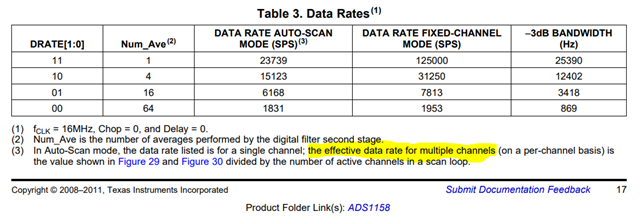Other Parts Discussed in Thread: ADS1278
In Auto scan mode in ADS1158, if we are utilizing all 16 channel, and lets say I am using 8usec time delay, no chopping, and 4 averages, with this config, let's say I am getting around 800/900 samples per second data rate. Can we accurately capture a 5 kHz sine wave on one channel ? What parameter will tell us if can get accurate capture or not?




